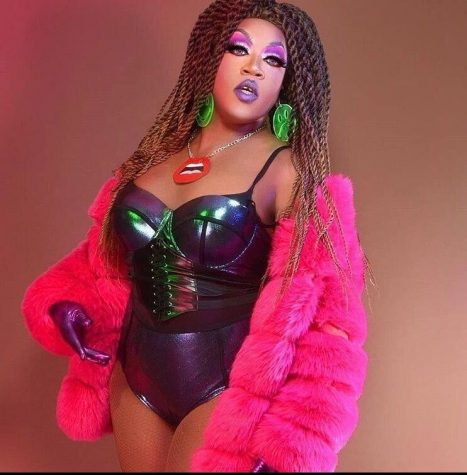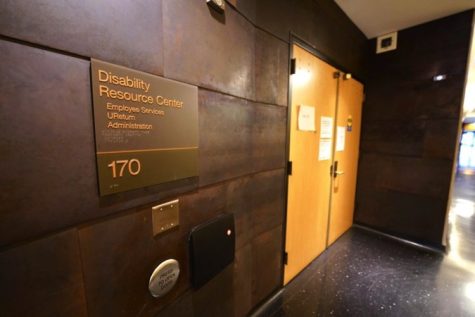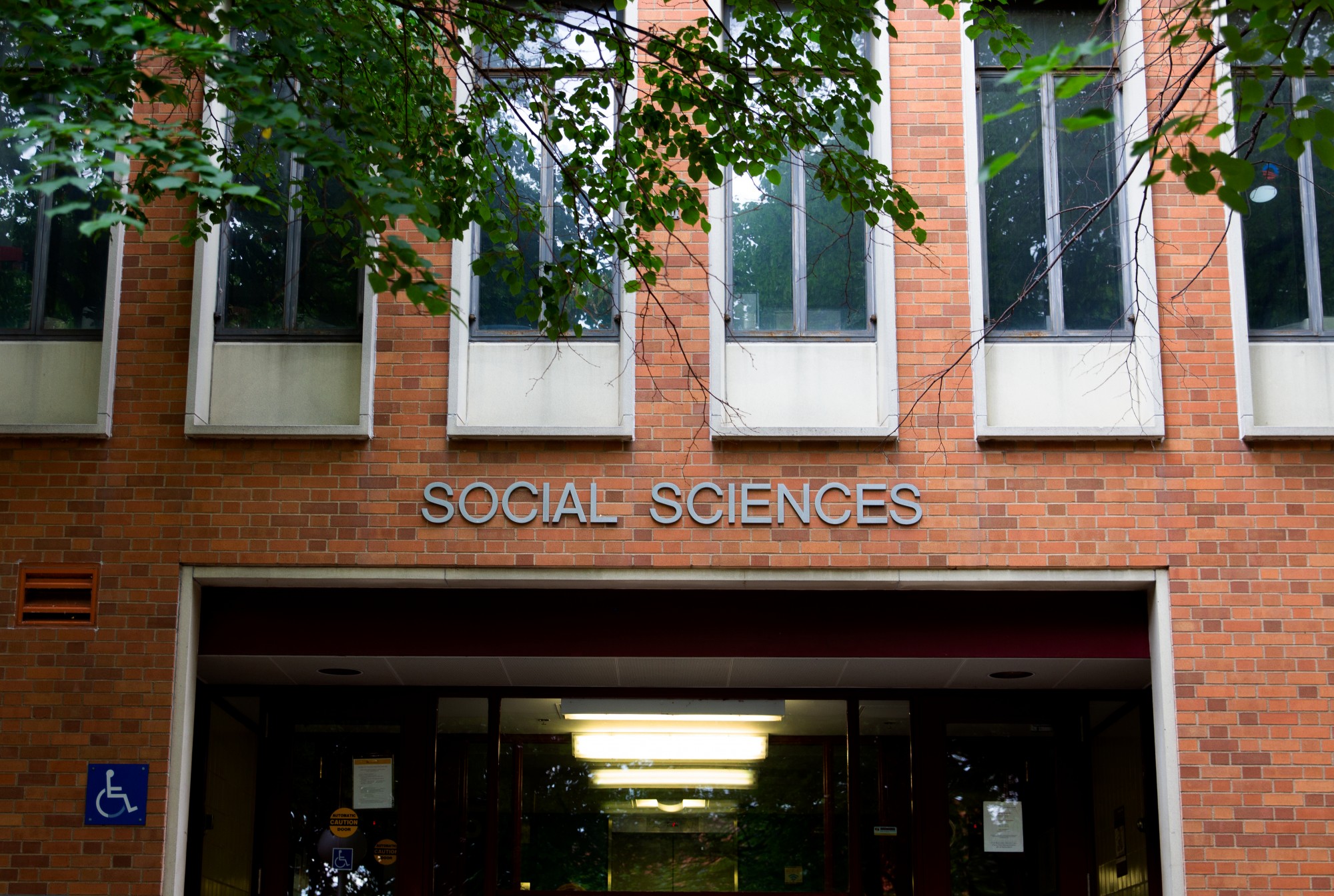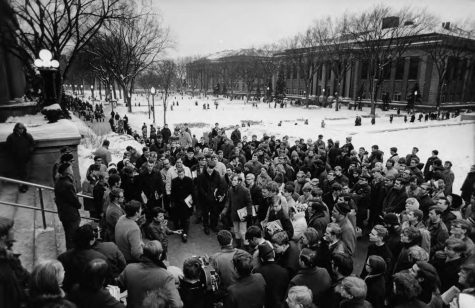Quarantine Queens: Local drag queens persevere amid a trying year
The drag scene changed a lot over the past six months, from a pandemic to a civil rights movement, nothing seems the same. But change isn’t always a bad thing.

Sasha Cassadine typically starts her workday at 6:30 a.m. She takes her time, slowly coming to life while sipping on a cup of coffee. When she finally feels awake, she turns up her music, sits down at her vanity and begins the hour-long process of putting on her makeup.
If she has an online performance that day, she’ll put herself together completely — a full face of makeup, a wig and a fancy outfit. If she has a brunch to attend, she’ll typically put her face together, grab her pre-packed bags and head out the door.
When she gets to her venue, she’ll finish her look, making sure her mask is on and double-checking that the other queens are ready to go. Then, it’s showtime.
Cassadine has been a drag queen in the Minneapolis area for around 14 years. She’s performed across the city working her way up from an amateur to a show director, living through numerous challenges in the drag community, including racial injustices, civil unrest and arguably the biggest one yet: a global pandemic.
Performing during a pandemic
Before the pandemic, Cassadine, like other professional drag queens, worked clubs, bars and brunches. She’d lip sync while collecting tips, connect with patrons after the show and, most importantly, perform with the audience.
But because of the pandemic, drag has gone from an interactive show to a solo performance.
“We used to be able to be up and close with the crowd and be able to focus on the patrons that would come to the [stage], be able to hug kids, have conversations,” Tygra Thunderkat, the host at Minneapolis gay bar The Saloon, said. “Now they get to just watch us perform.”
Because performing indoors creates a high risk environment for COVID-19 transmission, the queens have to take as many precautions as they can without compromising their ability to perform.
Cassadine wears a clear chin strap mask while performing, washes her hands often and has other people collect her tips.
In order to keep exposure down, workers at Crave, a restaurant Cassadine performs at, walk around with buckets to collect tips. They also advertise drag queens’ Venmo usernames so people can tip virtually.
As a show director, Cassadine has more responsibility to keep herself and others safe.
“We’re always buying new masks and trying to figure out what actually works. And of course, keeping up with the CDC standards for everything, to the best of our ability,” Cassadine said.
A lack of opportunities
Health risks aren’t the only facet of COVID-19 plaguing drag queens though. While Cassadine and Thunderkat have regular performances, not all drag queens are that lucky. With limited shows, amateur queens are being left behind.
Before the pandemic, many new drag queens performed at Lush’s amateur night, said Mr. Mom, a University of Minnesota graduate and Minneapolis-based drag queen. Once a week, anyone could sign up to perform on stage, making it a perfect opportunity for those new to the scene.
Since the start of the pandemic, Lush has permanently shut down. This left amateur drag queens without a place to start.
“If you are brand new, it’s really hard to get reserved,” Mom said. “You really have to make your own opportunity.”
Over the summer, Mom took her own advice and created Mx. Quarantine, an online drag show. The show had seven drag queens compete in three rounds: a looks round, an interview round and a challenge round, complete with a $100 prize.
While many queens are excited to adapt drag to an online setting and keep the art of drag alive in some capacity, they still grapple with the loss of the stage.
“Drag is really a performance in itself,” said Miss Ava Cado, a performer in Mx. Quarantine. “Without getting to see people and bring joy to others through your art, it’s not nearly as fulfilling or fun.”
While opportunities are limited at best, Cado and her partner Wanda Gag have found other ways to keep amateur drag alive without performing in person.
Like Mom, they hosted their own online drag show at the end of the summer and started a biweekly podcast called “Drag Me With a Spoon.”
“We usually do an episode every two weeks where we talk about current things happening in the Twin Cities drag scene, things we’re working on. And then we always have a guest, a different drag performer,” Cado said.
Racial injustice shapes community
COVID-19 aside, recently drag queens have also felt pressure amid the growing civil unrest surrounding racism in the United States. For most queens, leaving their identities behind when they come on the stage isn’t an option.
As a Black drag queen, Cassadine said she’s seen her fair share of discrimination against BIPOC performers over the years.
She’s seen double standards in dressing rooms, a lack of Black directors and complacency among white performers.
Around 2013, when Cassadine was a part-time performer at the Gay 90s, she alleges a fellow performer of color was not being paid fairly. She said for years, this performer was paid less than her white counterparts, and the show director never did anything about it.
Cassadine doesn’t blame the director solely for this injustice but said that he didn’t advocate for her when he should have.
“The show director [thought] ‘Oh, it’s not affecting me, so I’m not really going to put up a fight for [them] like I should as someone who was supposed to be a leader. I will be complicit and not say anything.’”
Since the police killing of George Floyd, this kind of complacency has become glaringly obvious to the drag community.
“I see a lot of people in the community who are OK with the way things are,” Cassadine said.
While some would rather resist change, there’s been a noticeable shift in the drag world since Floyd’s death. Cassadine said before there were no show directors of color in Minneapolis.
Recently, she’s been promoted to show director at Flip Phone, an entertainment company. The Gay 90s also hired Mercedes Iman Diamond, a director of color.
“The protests changed a lot and brought a lot of attention to all the things that’s been wrong in our scene,” Cassadine said. “You can see the change in people, that ‘aha!’ moment that everyone needed to realize that [racism] has been a problem forever.”
When it comes to educating others, Cassadine enjoys sharing her experiences in hopes that other people reach their “aha!” moment.
As a host, Thunderkat has a lot of time to talk to the audience. They enjoy being political on the mic and educating people to the best of their ability.
“I talk about trans issues, I talk about racial issues. I comment a lot on my intersections as an individual and as an entertainer,” they said. “I talk about all those things, but I do it in a joking way so that everyone’s a part of the conversation.”
Moving forward, Cassadine wants herself and all other Black drag queens to be seen as people, not a number.
“What I see a lot of people do, unbeknownst to them, is fill a black quota,” she said. “There’s a lot of tokenizing.”
While she’s grateful that there are more performers who are Black, Indigenous and people of color (BIPOC) being hired, she hopes they’re hired in good faith and not to fill quotas.
Cassadine continues to perform despite everything that has happened. Performing is her lifeline. It’s what makes her happiest and not even a pandemic or racial injustices can take that away.
“Everything I do every day is risky when it comes to this virus, but performing mentally brings me joy,” Cassadine said. “It brings other people joy, and in these times with crazy politics and a pandemic, people just need a little break and I’m willing to give that.”











anonymoussurvivor
Apr 15, 2021 at 2:20 pm
They are just showing their creativity. Some are acting, some it’s a lifestyle. Judge Not etc. if you are a Christian. Or a practicing Christian.
Tom
Oct 20, 2020 at 6:01 am
Who cares?
No seriously who cares?
A bunch of men are playing dress up. Soooooooo brave.